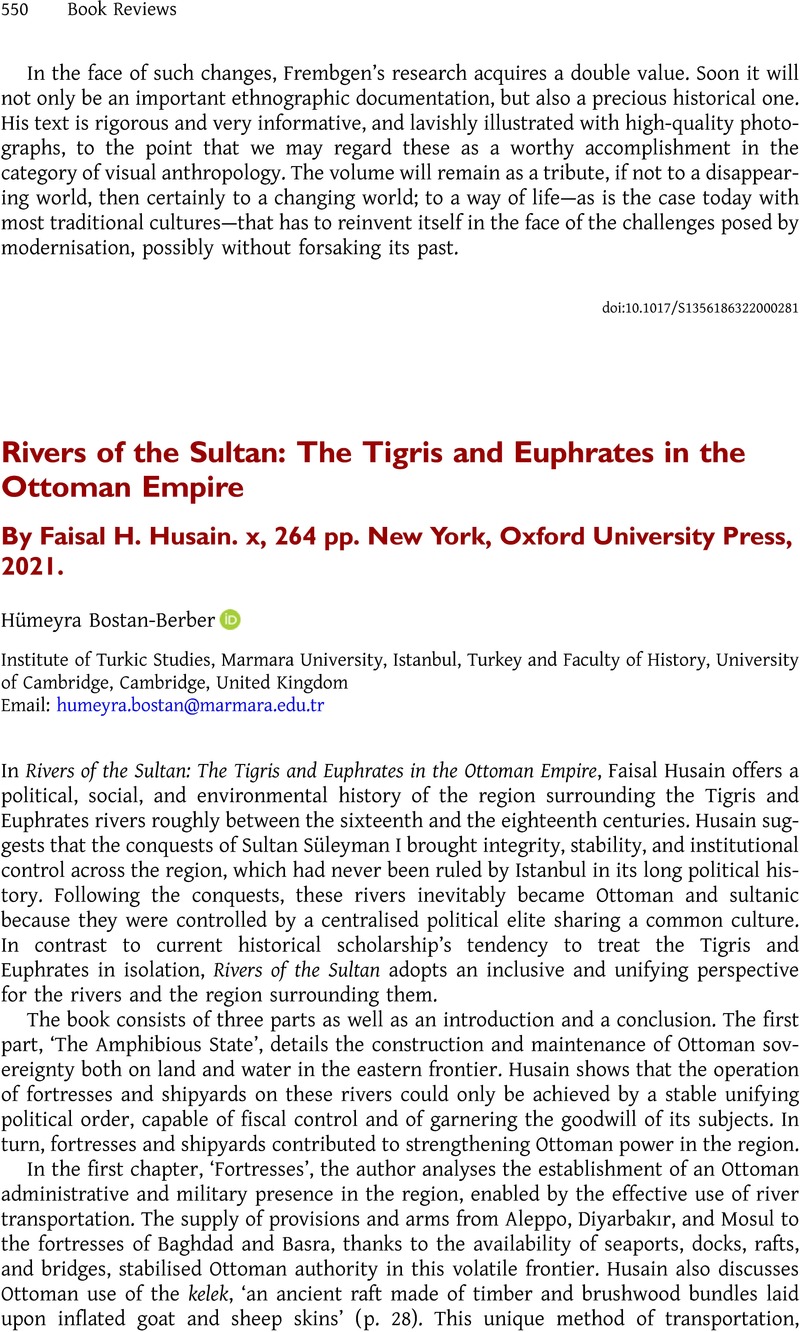No CrossRef data available.
Article contents
Rivers of the Sultan: The Tigris and Euphrates in the Ottoman Empire By Faisal H. Husain. x, 264 pp. New York, Oxford University Press, 2021.
Review products
Rivers of the Sultan: The Tigris and Euphrates in the Ottoman Empire By Faisal H. Husain. x, 264 pp. New York, Oxford University Press, 2021.
Published online by Cambridge University Press: 05 January 2023
Abstract
An abstract is not available for this content so a preview has been provided. Please use the Get access link above for information on how to access this content.

- Type
- Book Review
- Information
- Copyright
- Copyright © The Author(s), 2023. Published by Cambridge University Press on behalf of The Royal Asiatic Society



